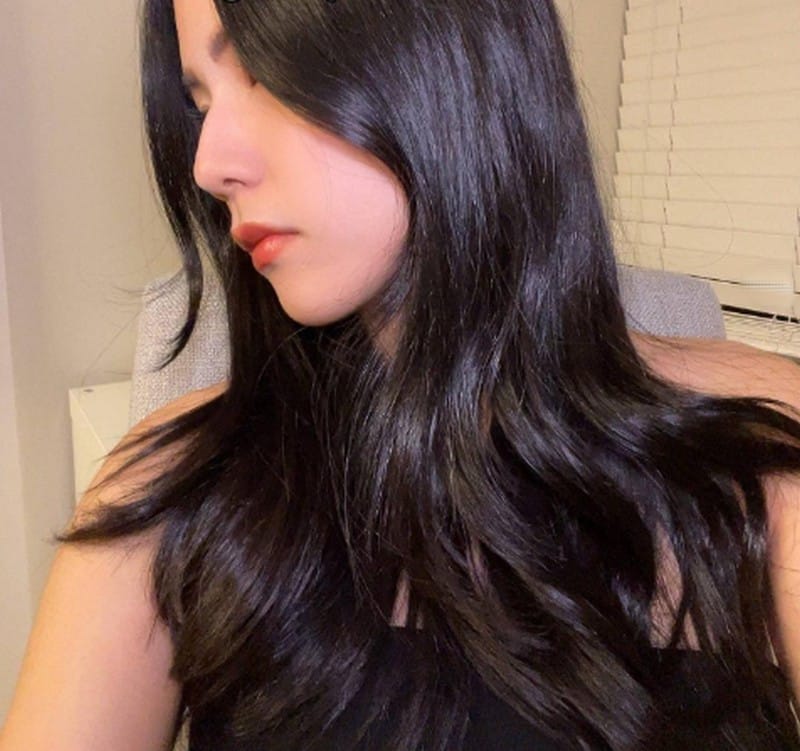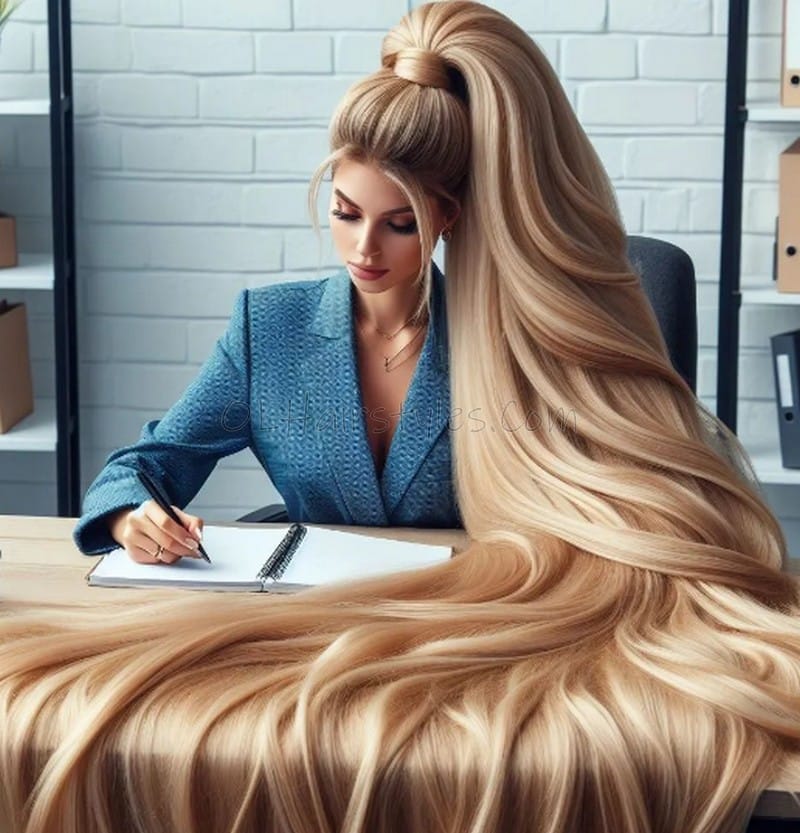Hair oil has become a popular secret in Asian hair care, and for good reason! This magical elixir offers a range of benefits that can transform your hair from dull to dazzling. Many people in Asia have used hair oil for centuries, and their beautiful, shiny locks are proof of its effectiveness.
One of the biggest advantages of using hair oil is its ability to deeply moisturize your hair. If your hair feels dry or frizzy, a few drops of oil can make a huge difference. It helps to lock in moisture, keeping your hair hydrated and healthy. Plus, it can protect your hair from damage caused by heat styling or harsh weather.
Another fantastic benefit is that hair oil can promote hair growth. Ingredients like coconut oil, argan oil, and jojoba oil are rich in nutrients that nourish your scalp. A healthy scalp is key to growing strong, beautiful hair. Massaging oil into your scalp can also boost blood circulation, which is great for hair growth.
Hair oil can also help with split ends and breakage. If you struggle with brittle hair, applying oil can create a protective barrier, preventing damage. Just a small amount can make your hair feel smoother and softer, making it easier to manage.
In addition to these benefits, hair oil smells amazing! Many oils have natural fragrances that can make your hair smell fresh and lovely throughout the day.
In conclusion, hair oil is a simple yet powerful way to care for your hair. With its moisturizing, nourishing, and protective properties, it’s no wonder that hair oil is a cherished part of Asian hair care. So why not give it a try? Your hair will thank you!
Rosemary oil
Rosemary oil is a fantastic natural remedy that many people are turning to for healthier hair. Known for its wonderful scent, rosemary oil for hair can make your tresses smell fresh and lovely all day long. But it’s not just about the fragrance; rosemary oil for hair growth has gained popularity because it may help boost hair growth and reduce hair loss.
Many believe that rosemary and hair growth are connected, as this oil can improve circulation to the scalp, promoting thicker hair. If you’re worried about hair loss, using rosemary oil for hair loss might just be the solution you need. So why not give rosemary oil for hair a try? Your hair deserves the best care!
Hair Oil for Hair Growth
If you’re on a quest for beautiful, healthy hair, finding the right hair oil for hair growth can make all the difference. Rosemary oil is often hailed as the best hair oil for hair growth because of its natural properties that help stimulate the scalp and improve circulation.
Many people swear by this good hair growth oil, as it not only smells amazing but also promotes thicker, stronger hair. When searching for the best rosemary oil for hair growth, look for options that are pure and organic, ensuring you’re using the best hair growth oil available. If you’re interested in natural hair growth oil, rosemary is a fantastic choice among oils that promote hair growth. Remember, your hair deserves the best care, and using the right hair oil can set you on the path to luscious locks!
Mielle Hair Oil
If you’re dreaming of gorgeous, healthy hair, Mielle hair oil is a fantastic option to consider. Among their popular products, Mielle rosemary oil stands out for its ability to promote hair growth. This special blend, often called Mielle rosemary mint oil, combines the refreshing scents of rosemary and mint oil, making your hair care routine feel like a treat.
Not only does Mielle oil smell incredible, but it also helps stimulate your scalp and improve circulation, which is so important for hair growth. Many people love using Mielle hair growth oil because it nourishes their hair, making it thicker and stronger over time. So, if you’re on the hunt for a natural hair growth oil, Mielle’s rosemary and mint oil could be just what you need to achieve those luscious locks you’ve always wanted!
Castor Oil for Hair
Castor oil for hair is a popular choice among those looking to boost their hair health. Many people believe that castor oil for hair growth can make a difference. This thick, rich oil is packed with nutrients that help nourish your scalp and strengthen your hair. If you’re struggling with thinning hair, using castor oil for hair regrowth might be just what you need. It can help improve blood circulation to your scalp and promote new hair growth. Plus, the moisturizing properties of castor oil can make your hair feel softer and look shinier. So, if you want to give your hair a little extra love, consider adding castor oil to your routine!
Joba Joba oil
Jojoba oil is a fantastic natural remedy that many people are turning to for their hair care routines. This amazing oil is not only great for moisturizing your scalp, but it also helps to balance the natural oils in your hair. If you’ve ever felt like your hair was too dry or too oily, jojoba oil can help find that perfect middle ground. It’s light and easily absorbed, making it a wonderful choice for people looking to promote healthy hair growth without the heaviness of other oils. Plus, using jojoba oil can make your hair feel soft and shiny, giving it that vibrant look we all desire. So, if you’re searching for a simple way to boost your hair’s health, consider adding jojoba oil to your hair care routine!
Tea Tree Oil for Hair
If you’re looking for a natural way to enhance your hair care routine, tea tree oil for hair might just be the answer you’ve been searching for. Using tea trees for hair can promote a healthier scalp, leading to better hair growth and less breakage.
Plus, the refreshing scent of tea tree oil for hair gives you that clean feeling you crave. Just a few drops of tree oil for hair mixed with your favorite shampoo or conditioner can work wonders. So, why not give tea tree oil a try and see how it transforms your hair?
Beard Oil
If you’re sporting a beard, you know how important it is to keep it looking and feeling great. That’s where beard oil comes in! The best beard oil not only softens your facial hair but also helps keep your skin underneath healthy and moisturized. Imagine rubbing a few drops of this magical oil into your beard and feeling it transform into something soft and manageable.
Plus, the right beard oil can leave you smelling fantastic, giving you that extra boost of confidence throughout the day. So, if you want to take care of your beard and make it look its best, don’t overlook the power of beard oil!
Argan oil
If you’re looking for a way to keep your beard looking sharp and feeling amazing, arganoil is a game changer. Often called argan Moroccan oil, this special oil comes from the nuts of the argan tree, which grows in Morocco. Just a few drops can do wonders for your facial hair, making it softer and more manageable.
Not only does arganoil help tame those wild strands, but it also nourishes the skin underneath, keeping it healthy and hydrated. Imagine the joy of running your fingers through a well-groomed beard that smells great and feels fantastic! With argan oil in your grooming routine, you’ll feel more confident and ready to take on the day.
Gisou Hair Oil
Gisou Hair Oil does wonders for the skin underneath your hair, keeping it healthy and hydrated. Whether you’re styling for a big night out or just want to feel confident in your everyday look, this oil has got your back. Picture the joy of knowing your hair is not only well-groomed but also nourished. With Gisou Hair Oil in your hair care routine, you’ll feel empowered and ready to take on the world, one fabulous strand at a time!
Gisou hair oil is a magical blend that works wonders for your hair. Imagine running your fingers through your hair and feeling how soft and smooth it is, while also enjoying a lovely scent! Using Gisou hair oil not only makes your hair look amazing, but it also keeps your scalp healthy and hydrated. It’s like giving your hair a treat every time you use it, making you feel more confident and ready to face the world.
Hair Oil for Dry Hair
Finding the right hair oil can feel like searching for a needle in a haystack, but don’t worry! With so many options out there, you’re bound to discover the perfect match for your unique hair type. Whether you have curly locks that need extra love or straight strands that just won’t cooperate, using a good hair oil can transform your tresses from dull to dazzling.
One standout choice is Gisou hair oil, a magical blend that works wonders for dry hair. Imagine running your fingers through soft, smooth strands that smell amazing! Not only does it make your hair look gorgeous, but it also nourishes your scalp, keeping it healthy and hydrated. Think of it as a special treat for your hair, boosting your confidence and helping you shine in any situation. So, let’s dive into the world of hair oils and find the best oil for your dry or curly hair, so you can say goodbye to bad hair days for good!
Wild Growth Hair Oil
If you’ve ever wished for a magical solution to transform your locks into a shiny, flowing mane, then Wild Growth Hair Oil might be just what you need. This incredible oil is packed with natural ingredients that work together to nourish your hair and scalp, leaving you with soft, healthy strands that you’ll be proud to show off. Imagine feeling the confidence that comes from knowing your hair looks amazing every day!
In a world where first impressions matter, having luscious hair can make all the difference. Wild Growth Hair Oil isn’t just a product; it’s a game-changer for anyone looking to enhance their hair’s natural beauty. Whether you have curly, straight, or wavy hair, this oil offers the hydration and care that your tresses crave. So, let’s explore how Wild Growth Hair Oil can help you say goodbye to bad hair days and hello to a vibrant, gorgeous new you!
Kerastase Hair Oil
When it comes to our hair, we all want that perfect shine and softness that turns heads. Enter Kérastase Hair Oil, a beauty secret that promises to transform your locks into a radiant masterpiece. Whether you’re dealing with frizz, or dryness, or just want to enhance your natural beauty, Kérastase Elixir Ultime offers the hydration and nourishment your hair has been craving. Imagine running your fingers through silky, smooth strands that not only look incredible but feel amazing too!
Kérastase Elixir Ultime Oil isn’t just any hair product; it’s a luxurious experience that elevates your hair care routine. With a blend of precious oils, this formula works wonders for every hair type, from straight to curly. Join us as we dive into the remarkable benefits of Kérastase Hair Oil and discover how it can help you achieve the hair of your dreams!
Jamaican Black Castor Oil
Are you ready to unlock the secret to gorgeous hair? Jamaican Black Castor Oil has been a cherished beauty staple for generations, and for good reason! This magical oil is packed with nutrients that nourish and strengthen your hair from root to tip.
Unlike regular castor oil, Jamaican Black Castor Oil is made by roasting the castor beans, giving it a rich color and a unique ability to promote healthy hair growth. Whether you have curly, straight, or wavy hair, this oil can transform your locks into a silky, shiny masterpiece.
But the benefits don’t stop there! Not only does Jamaican Black Castor Oil work wonders for your hair, but it also has incredible moisturizing properties for your skin. Imagine a product that not only helps you achieve the hair of your dreams but also leaves your skin feeling soft and hydrated.
Join us as we explore the amazing ways Jamaican Black Castor Oil can elevate your beauty routine and why it’s a must-have in every household. Get ready to embrace the beauty of this versatile oil and discover how it can change your hair and skin for the better!
Coconut Oil for Hair
If you’ve ever dreamed of having luscious, shiny hair that turns heads, then coconut oil might just be your new best friend. Known for its incredible moisturizing properties, this magical oil has been cherished for centuries in beauty routines across the world. Imagine running your fingers through soft, silky locks that are not only beautiful but also healthy!
Coconut oil is packed with nutrients that can nourish your hair from root to tip, making it an easy and affordable option for anyone looking to boost their hair game.
But wait, there’s more! Coconut oil isn’t just about looking good; it can also promote hair growth and help repair damage. Whether you’re battling frizz, dealing with split ends, or simply want to encourage those strands to grow longer and stronger, coconut oil has got your back.
Join us on this journey as we dive into the many benefits of coconut oil for hair and discover how this simple ingredient can transform your hair care routine. Say goodbye to bad hair days and hello to the hair of your dreams!
Amla Oil
Are you ready to unlock the secret to gorgeous, healthy hair? Amla oil, derived from the nutrient-rich Indian gooseberry, has been a cherished beauty remedy for centuries. Known for its incredible properties, this powerful oil is packed with vitamins and antioxidants that can nourish your hair from root to tip. Whether you’re struggling with dryness, dullness, or hair loss, Amla oil has something special to offer. Imagine the shine and strength that comes from nature’s miracle worker!
But wait, there’s more! With regular use, you can say goodbye to frizz and hello to silky, smooth locks.
Ouai Hair Oil
If that sounds like you, then get ready to discover Ouai Hair Oil, your new best friend in the quest for stunning, healthy hair. This lightweight oil is infused with the goodness of Amla oil, a secret beauty weapon that’s been loved for generations. Packed with vitamins and antioxidants, Ouai Hair Oil works wonders to nourish your strands, bringing life back to tired locks and transforming them into a silky, smooth masterpiece.
Imagine running your fingers through your hair and feeling it soft and shiny, without the pesky frizz that usually tries to steal the spotlight. With Ouai Hair Oil, you can finally unlock the secret to gorgeous hair that turns heads everywhere you go. So, let’s dive in and explore how Ouai Hair Oil can help you achieve the hair of your dreams!
Bumble and Bumble Invisible Oil
Have you ever wished for hair that feels as good as it looks? Imagine running your fingers through your locks and feeling nothing but smooth, shiny strands without a hint of frizz in sight. That dream can become a reality with Bumble and Bumble Invisible Oil. This magical elixir is designed to transform your hair, making it softer and more manageable while giving it a sleek, polished finish. Say goodbye to bad hair days and hello to a look that turns heads!
Bumble and Bumble Invisible Oil is more than just a styling product; it’s a game-changer for anyone looking to enhance their hair’s natural beauty. Whether you’re dealing with dryness, or damage, or just want to keep your hair looking its best, this oil has got your back. So, let’s take a closer look at how BB Invisible Oil can help you achieve the shiny, frizz-free hair of your dreams and make every day a good hair day!
Olive Oil for Hair
When it comes to taking care of your hair, you might be surprised to learn that one of the best secrets lies in a simple kitchen staple: olive oil. This golden liquid isn’t just for cooking; it can work wonders for your locks too! Packed with nutrients and healthy fats, olive oil can help fight dryness and damage, leaving your hair looking shiny and feeling soft. Whether you’re dealing with frizz or just want to give your hair a little extra love, incorporating olive oil into your hair care routine can be a game-changer.
Imagine waking up every day to hair that shines and feels as good as it looks. With olive oil, that dream can become a reality! It’s easy to use and can be mixed with your favorite styling products, like Bumble and Bumble Invisible Oil, to give your hair the ultimate boost. So, if you’re ready to transform your hair from dull and lifeless to vibrant and healthy, stick around. We’ll explore the amazing benefits of olive oil for hair and share tips on how to make it work for you!
Is Using Hair Oil Necessary?
In conclusion, using hair oil can truly be a game-changer for your hair. It’s not just about looking good; it’s about feeling confident in your skin. Imagine running your fingers through silky, shiny locks that turn heads wherever you go. Olive oil is a fantastic option that’s easy to incorporate into your hair care routine.u003cbru003eSo, if you’re ready to give your hair the love it deserves, why not give hair oil a try? You might just discover that it’s the secret ingredient to achieving the hair of your dreams. Start your journey to healthier hair today—embrace the power of hair oil!
Should You Not Apply Oil To Your Hair?
When it comes to hair care, opinions can vary wildly, especially about the use of hair oil. For some, applying oil is a cherished ritual that turns dull strands into radiant locks, while others raise an eyebrow and wonder if it’s really necessary. Have you ever found yourself standing in front of the mirror, unsure if that bottle of olive oil on your shelf is a friend or foe? You’re not alone! The debate over whether to oil your hair can be confusing, especially with so many products and tips out there.u003cbru003eBut what if I told you that the answer isn’t as clear-cut as you might think? While many swear by the benefits of oiling, there are also arguments against it that deserve attention. Understanding the pros and cons can help you make the best choice for your unique hair type. So, let’s dive deep into the world of hair oils and uncover whether you should be reaching for that bottle or leaving it on the shelf. Your journey to gorgeous, healthy hair might just depend on it!
Is It Okay Not To Oil Your Hair?
When it comes to hair care, many of us have heard the age-old advice: u0022Always oil your hair.u0022 It’s a ritual that has been passed down through generations, promising shiny, strong locks and a healthy scalp. But what if I told you that the answer to whether you should oil your hair isn’t as simple as it seems? While there are plenty of people who swear by the amazing benefits of hair oil, there are also valid reasons to skip it altogether. It’s time to dig into this debate and see what the fuss is all about!u003cbru003eUnderstanding the pros and cons of hair oiling can be a game-changer for your hair routine. Maybe you have a different hair type or specific needs that make oiling less effective for you. By exploring both sides of the conversation, you can make an informed decision that suits your unique hair journey. So, let’s take a closer look at the world of hair oils and find out if you really need to reach for that bottle—or if it’s perfectly okay to leave it on the shelf! Your path to beautiful, healthy hair could depend on it.
How to Choose A Good Hair Oil?
When it comes to care, the right products can make all the difference, and hair oil is no exception. With so many options available, choosing a good hair oil can feel overwhelming. Do you go for something light and hydrating, or a heavier oil packed with nutrients? Understanding what your hair truly needs is essential for unlocking its full potential. In this blog post, we’ll dive into the world of hair oils, exploring their benefits and drawbacks so you can find the perfect match for your unique hair type.u003cbru003eThe truth is, hair oiling can work wonders for some, while others might find it doesn’t suit their hair at all. From nourishing dry strands to adding shine and reducing frizz, hair oil can be a game-changer. But before you make a decision, it’s important to consider your hair’s specific needs. Join us as we break down the essentials of choosing the right hair oil, helping you take a step closer to achieving that healthy, luscious hair you’ve always dreamed of!
Does Hair Oil Make Your Hair Shine?
Are you tired of dull, lifeless hair that just won’t cooperate? You’re not alone! Many people dream of having shiny, vibrant locks that catch the light and turn heads. One popular solution that often gets a lot of buzz is hair oil. But does it really work? The truth is, hair oil can be a miracle worker for some, helping to nourish dry strands and add that coveted shine. However, it might not be the best fit for everyone, making it essential to understand your own hair’s unique needs.u003cbru003eIn this blog post, we’ll dive deep into the world of hair oils and explore how they can transform your hair from drab to fab. We’ll discuss the different types of oils available, their benefits, and how to choose the one that’s perfect for you. So, if you’re ready to unlock the secret to shiny, healthy hair, stick around! Together, we’ll help you navigate the exciting journey of hair oiling and get one step closer to achieving the lustrous locks of your dreams.
The beauty and health of your hair are in your hands, and the responsibility for taking care of it is yours alone. Currently, vegetable oils are extremely popular, aiming to provide the hair and scalp with beneficial nutrients through, e.g., hair oiling. Originally, the method of hair oiling came from Asia, and today it is one of the most recommended hair care methods. Hair oiling is not only trendy but also extremely effective. Get to know the method and discover how it can help your hair.
As for the great properties of natural oils, it must be recognized that it is a shame not to use them to the full. It should be mentioned that although we are often skeptical about oiling in some ways, it is an effective method. It is time to abandon this widespread skepticism.
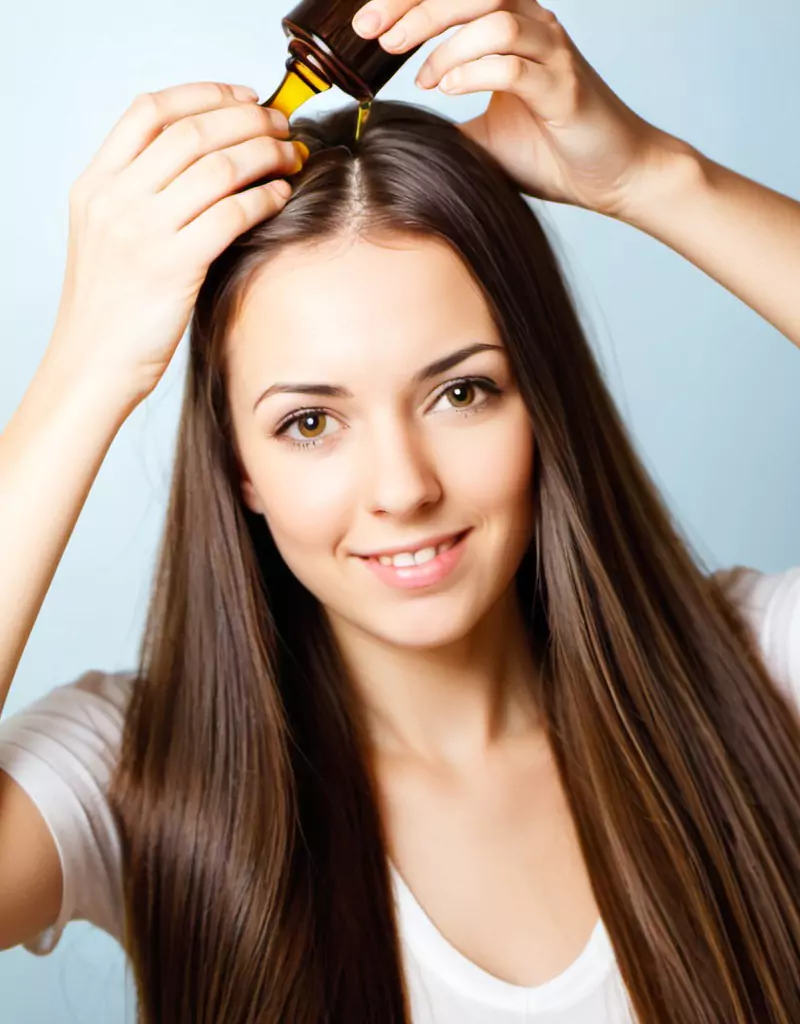
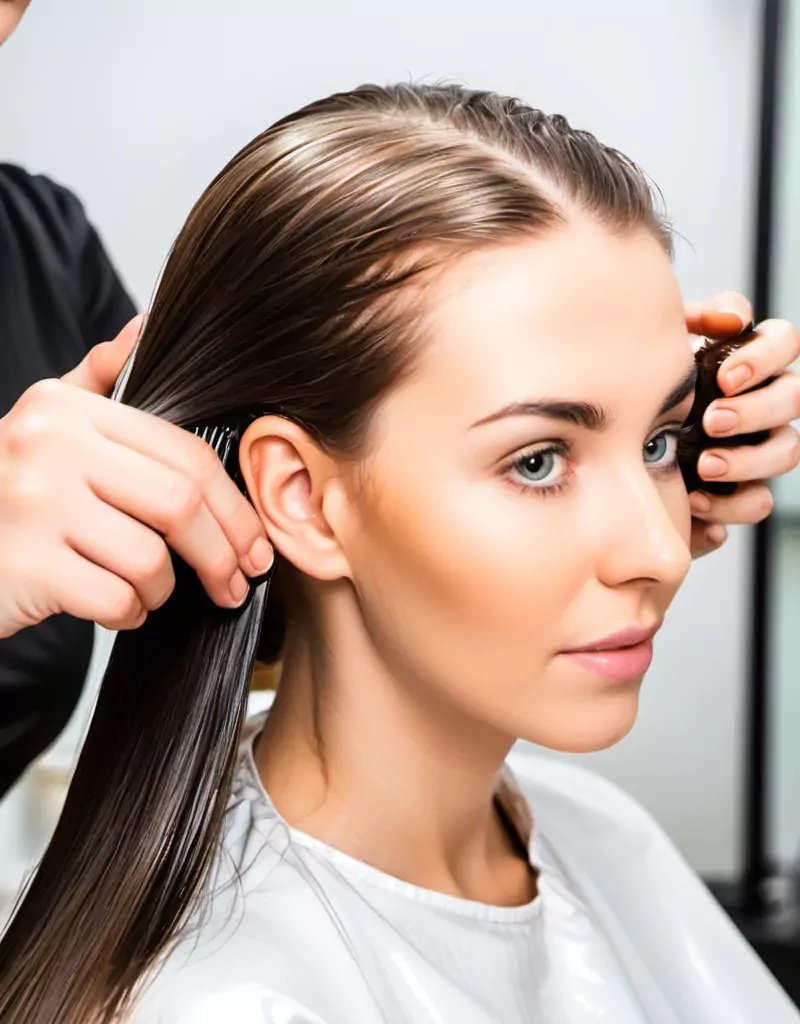

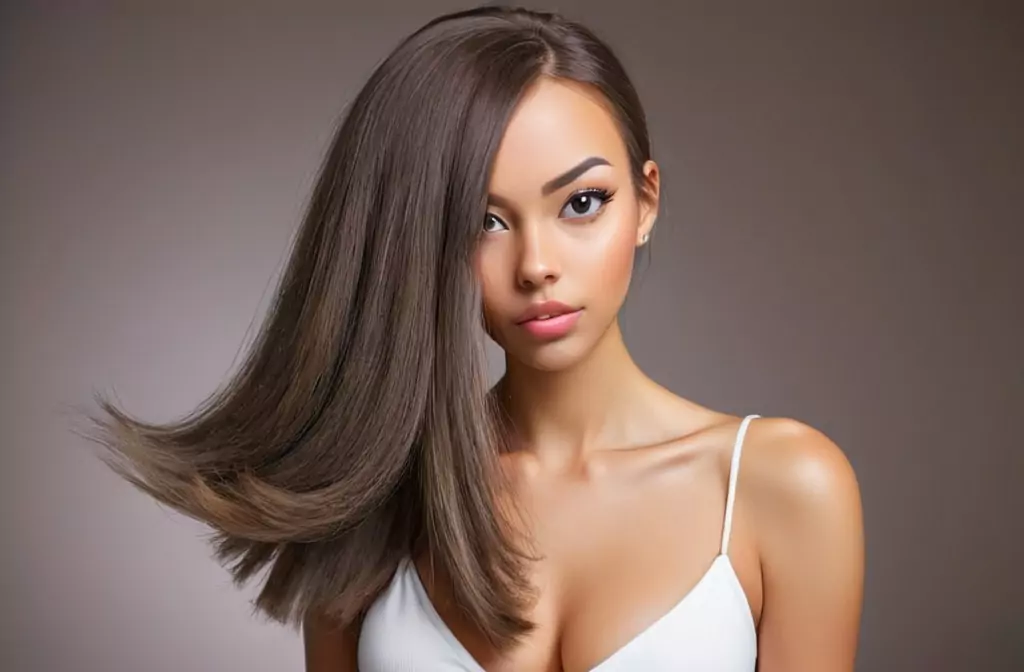


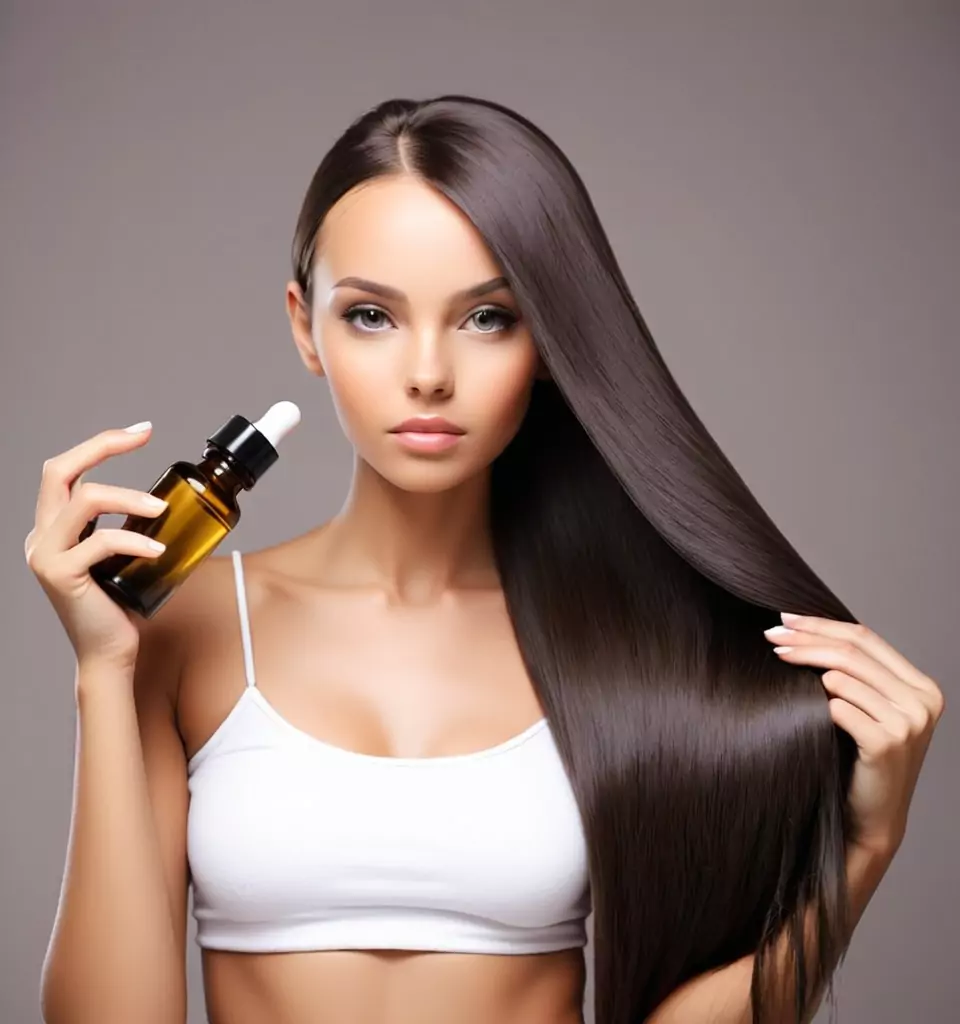
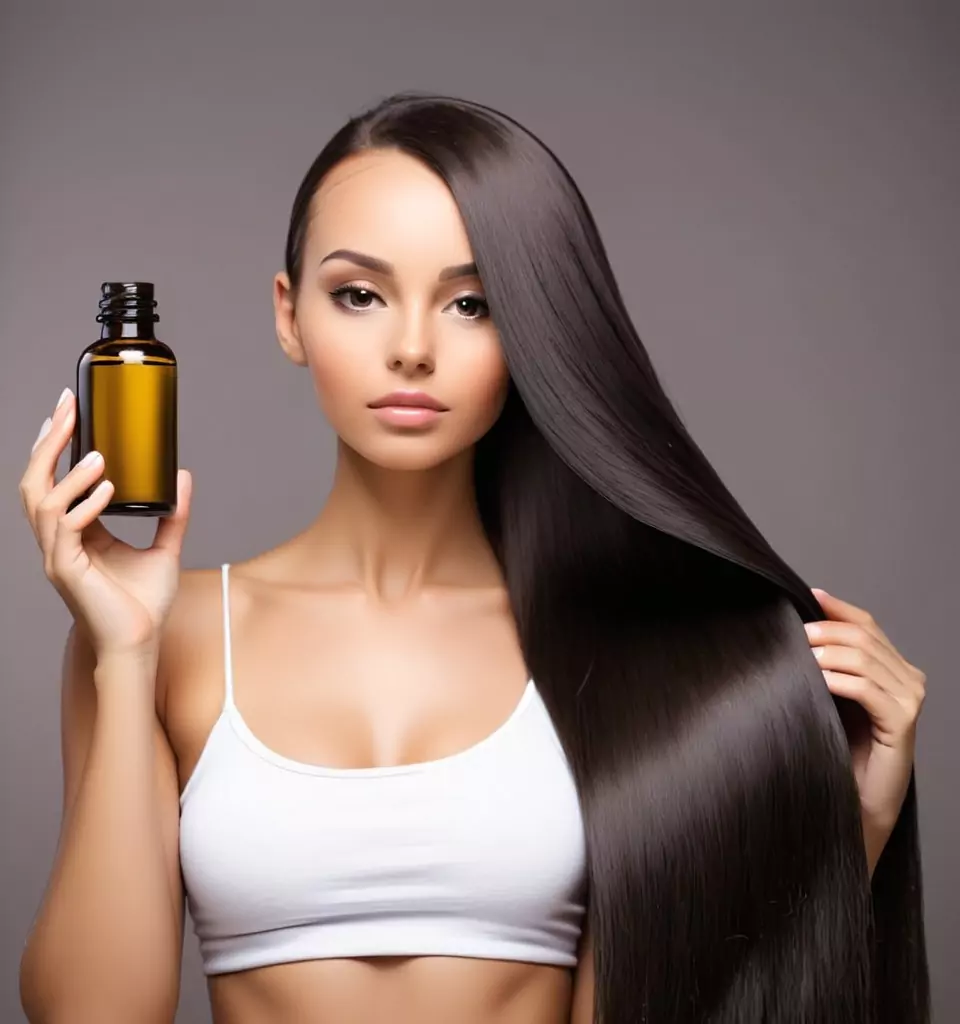
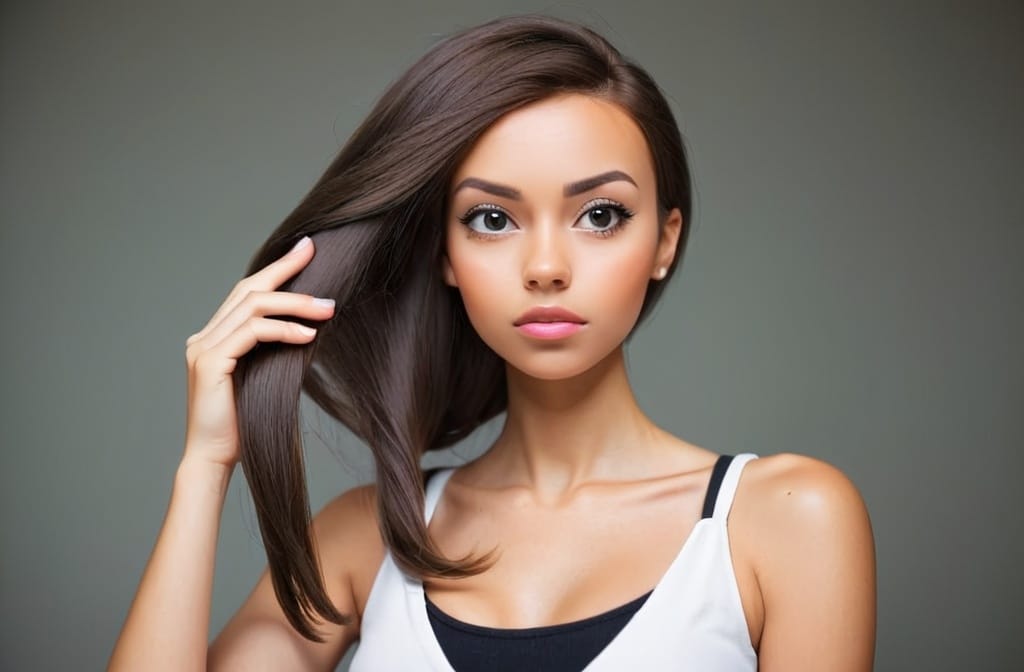

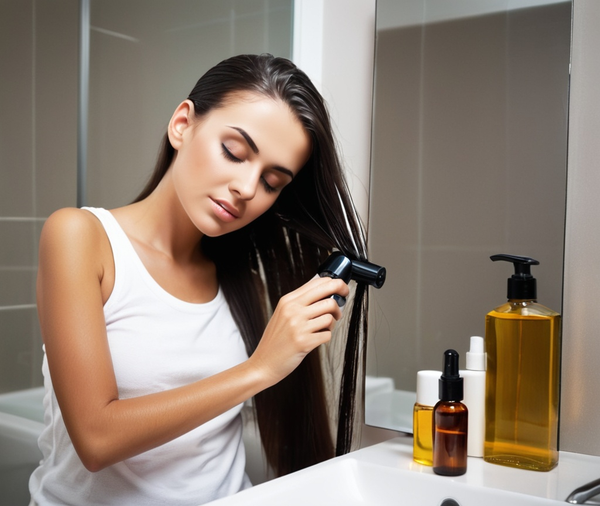

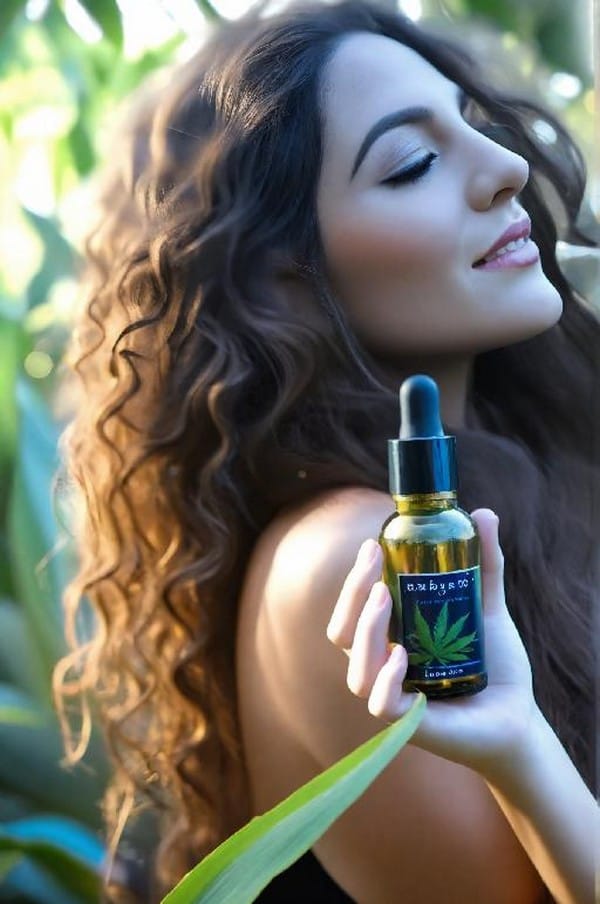
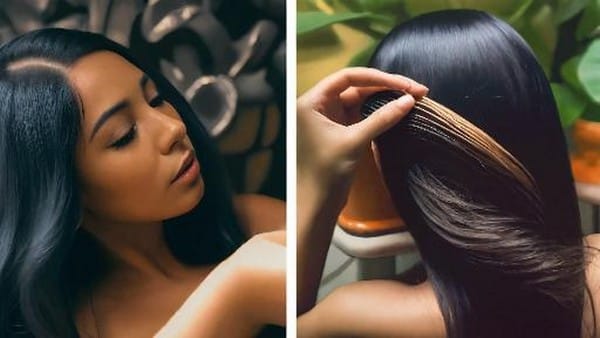
Let’s start with a simple question: What is hair oiling? The answer is straightforward and logical. Just put together the properties of this method. Hair oiling involves applying vegetable oil to the hair and (occasionally) massaging for effective circulation and absorption. The task of the method is to ensure hair hydration, nutrition, strengthening, and renewal.
Hair oiling with a classic oil
This hair care method is convenient, as you can choose from more than 100 oils, butter, and macerates. The selection is really wide, and finding quality oil is no longer difficult. You can also use hair oil with classic cooking oil. The most popular varieties include coconut, canola, sunflower, olive, grapeseed, corn, and soybean oils. Hair oiling is as effective as the long-term application of nourishing products. The key to success is knowing the porosity of your hair.
Hair oiling: do it yourself
Hair oiling offers several advantages. It is an effective and comprehensive method that simultaneously strengthens the hair and scalp. The hair restoration procedure through the strengthening of keratin structures is effective, just like Olaplex or Botox for hair in a beauty salon. But the advantage of oiling is that it can be done at home without help. Thanks to the regularity of the application and its effectiveness, the results will be many times better than those you would get with ordinary products. It is a great alternative to professional hair care methods that are recommended for all hair types.
Benefits
When we talk about the main benefits of oiling hair, we must not forget about its other advantages. Nevertheless, at least 10 essential benefits of this care can be listed.
- Oiling can be done at home; it is easy and does not require much effort.
- you can choose from different methods that can be combined at will
- depending on the oil you choose, you will achieve different effects
- oiling visibly improves the condition of the hair, which lasts for a long time
- hair oils already have effects after the first use; they ensure softness and shine
- the cost of hair oiling is not high; it pays to invest in quality oils
Effects
A clear advantage of vegetable oils is their effect. Regular oiling will ensure results quite quickly, thanks to the excellent absorption of oils into the hair structure. In terms of composition, vegetable oils have a similar structure to the lipid layer that protects the skin and the oil from the sebaceous glands of our skin. This is why hair oiling is such an effective method. The skin and hair effectively absorb the oils, and they reach all the layers, strengthening and beautifying the hair as a result.
In short, hair oiling works after the first application, and after regular use, it will beautify, strengthen, and nourish the hair from the inside. Results will be visible immediately with softer and more manageable hair. Hair oiling is worth it if you want to strengthen, restore, and stimulate the growth of your hair.
10 BENEFITS OF HAIR OILING
Without efficiency and sufficient effect, the fact that hair oiling at home is a simple application method is useless. However, hair oils are effective and, on top of that, very versatile, which adds to their popularity. What are the benefits of hair oiling? Let’s take a closer look at them.
Inhibits excessive hair loss
The hair has a deep effect when, thanks to the regular application, it strengthens the structure of the hair, making it less prone to breaking and falling out. In short, a strong root effectively nourishes the hair and keeps it anchored in the structure of the scalp.
It strengthens the hair root and accelerates hair growth
Natural oils work at the source of all problems, which is the root, which is precisely why they can stimulate growth. The best oil for this task is castor oil. Accelerates growth and activates dormant roots to ensure so-called “baby hair.”
Regulates the processes taking place on the scalp
Hair health starts deep in our skin, where the nutrients necessary for hair growth and strength come from. Hydration is also another point. If the condition of the skin is not good enough, it is also reflected in the hair and its structure. Hair oils ensure the correct pH, regulate the activity of sebaceous glands, and soothe irritation.
Restores and ensures regeneration
Hair oiling is the only natural way of caring, thanks to which we can restore damaged hair. Strong regeneration, strengthening of the keratin structure of the hair, growth support, and restoration of hair from roots to ends are finally possible thanks to oils.
It gives elasticity to the hair and also smooths it
After oiling, the hair becomes soft and flexible. It is the result of sealing the cuticles on the outer layer of hair and covering them with a protective film. Oiling the hair provides softness, smoothness, and elasticity, which results in, for example, easier combing of the hair during styling.
Eliminates dandruff and prevents oiliness of the skin
No hair conditioner can provide such comprehensive scalp care as oils. They are the only substances that hydrate, strengthen, and regulate the processes taking place in the skin. The result is that the sebaceous glands work more calmly and without excess sebum. Thanks to this, the hair does not get greasy, and the dandruff problem also disappears.
Protects fragile hair ends
Oils provide natural and very gentle hair protection. When chosen correctly, they can even protect hair from heat, UV rays, wind, salt water, and environmental toxins and pollutants. For problems with the ends of the hair, oils are undoubtedly the best remedy.
Makes combing and hair styling easier
Difficulty with styling, frizz, and unruly hair—all these problems magically disappear after using hair oils. Regular application of oils to wet hair as a styling base will greatly facilitate and speed up hair care and styling.
It hydrates, nourishes, and ensures vitality
Among the main advantages of oiling hair are its strong moisturizing and nourishing effects. Hair oils restore proper moisture levels, prevent water loss, supplement nutritional deficiencies, and restore hair vitality.
It softens, highlights the color, and improves the shine of the hair
Hair oiling provides great effects. In addition to caring for the hair from the inside, hair oils also beautify the hair from the outside. They add shine, ensure velvety softness, prevent hair from matting, and enhance its color (even after dyeing).










